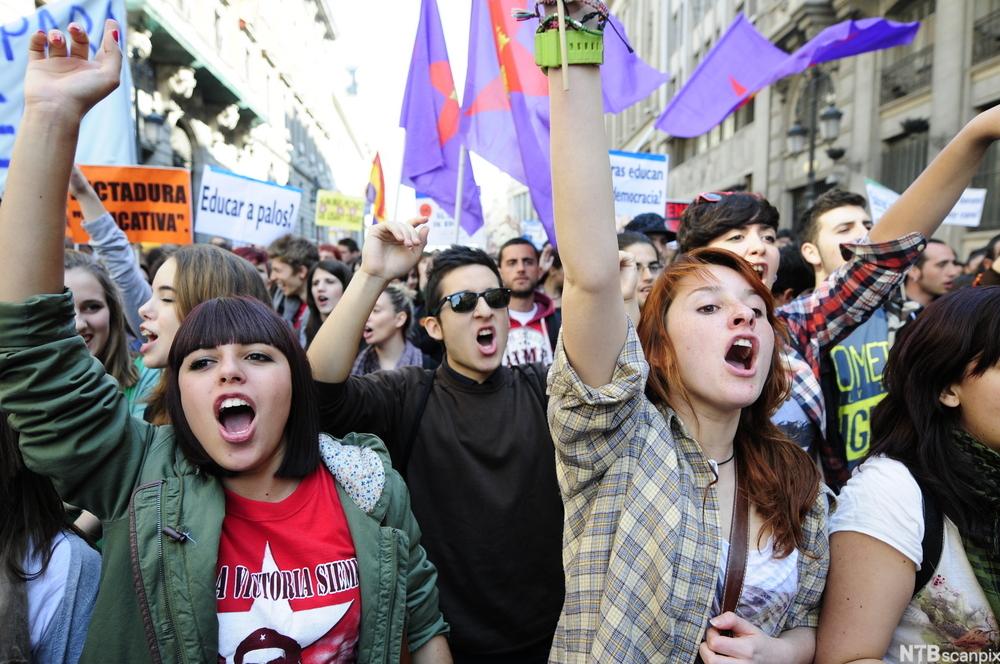
How do you see your future?
What plans do you have for getting a job?
In connection with the World Day of Social Justice, 20 February 2013, several young people are talking about social justice. Listen to what they say and then answer the questions below.
(pass with flying colours = bestå med glans)
- What does social justice mean to them?
- What does social justice mean to you?
- What does the right to work have to do with social justice?
Little has changed in the levels of youth unemployment in recent years and little is expected to change up to 2017 according to the International Labour Organization (ILO). Over 75 million young people between 15 and 24 are unemployed and many are worried about the future.
Tasks and Activities
Youth Employment Crisis
Watch the video.
(International Labour Office = Internasjonal arbeidskontor International Labour Office)
- Which countries do the 4 young people come from?
- What are the feelings expressed by them?
- Based on the youth unemployment information in the video, make 5 comprehension questions and ask another student to find the answers.
Youth Employment Outlook
- Study the article from the ILO, Global Employment Outlook, and make your own glossary of important words using mytask.no
- Study the statistics on youth unemployment rates forecasts and find out:
- Will unemployment decrease in any of the areas?
- Which area will have the greatest increase?
- Which area will have the second greatest increase?
- Use the data in the table to make charts. Show the relationship between youth unemployment rates in the different countries in 2012 and in 2017, and the trend in youth unemployment rates from 2012 to 2017. Check about using statistics and charts here.
- What does NEET stand for?
- The article calls for: “Schemes using employment guarantees and an emphasis on training ..” What advantages are mentioned in connection with such schemes?
Discuss
- What are some of the reasons for high youth unemployment?
- Which problems are associated with youth unemployment?
- What do you think it would be like to be unemployed?
- Are you worried about the future?
- What kind of challenges do young people face in the job market and the workplace?
- What could be done internationally to alleviate the situation for unemployed young people?
- What could young people do themselves to meet the challenges?
Photo Contest
The ILO Youth Employment Programme is organizing a photo contest, "Work4Youth" focusing on young people at work and the challenges they face. Click here and find out more about it.
Writing
- Whether you get a job or not could depend on the job application and CV you send in; not just your formal qualifications, but also your additional skills and the way you formulate your application. What does it take for you to be the successful applicant? Write the "world's best job application".
- Write a letter of recommendation to the prospective employer for one of your fellow students who has applied for a job.
Oral Group Work
Make a programme about the future with respect to jobs and opportunities for young people. It could be a radio programme, a debate programme or a roleplay sent "live" from a studio. Some points to consider might be:
- How do you see the future?
- What do you dream about?
- Will getting a job be a problem?
- Will the job situation affect your choice of further education?
- Will young people in Norway have to worry about unemployment?